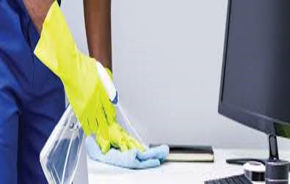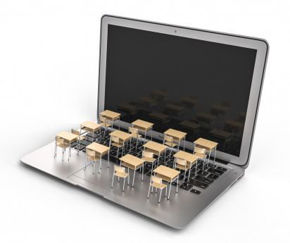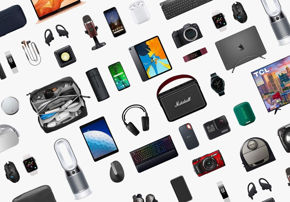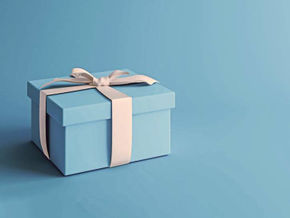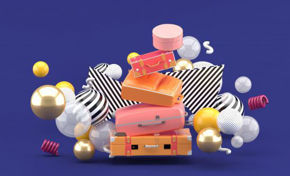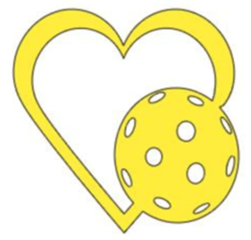5 mins read//
INTRODUCTION:
Many coaches believe that the serve is the most important skill in the game of pickleball. It is critical that players be taught proper techniques because more games at the beginner level are lost through poor serving than any other reason. Once properly learned, the serve will form the heart of your future offensive skills.
THE CONCEPT:
The game of pickleball starts with a serve. The server must stand behind the baseline and serve with an underhand stroke whereby the paddle blade makes contact with the ball below the waist in an upward arc. The ball must land in the opponent's court - opposite from the server without touching the net or the NVZ line.
Check the rules for comprehensive breakdown of service.
IN THE EARLY STAGES:
Learning to serve may take some practice. Try regulations tossing a ball underhand deep into the opponents court with your playing hand. Then use the same motion while hitting the ball with your paddle.
Patience is a virtue when learning a new skill. The natural progression of skill development starts with advancement of technical skills.
TECHNICAL SKILLS:
Fundamental skills required to play the game. This foundation will enhance the enjoyment of the game. In the beginning, it is recommended that players develop technical skills before engaging in competitive playing time. It is equally important to understand strategies involved in serving and the fundamental competencies that will lead to more extensive developmental skills and enhancement of natural abilities.
STRATEGY:
A style of play or tactics imposed upon the opposition based on your strengths and neutralizing or taking advantage of opponents weaknesses.
SUCCESSFUL SERVE STRATEGY:
Avoid service faults. Aim for the centre of the court to get the ball in play.
GOOD TECHNIQUE:
Constant emphasis must be made on good technique, which is essential to develop a compete, smooth motion and follow-through. There are several types of serves used by advanced players but beginners must master the basics before moving on to more variations that can be applied in certain circumstances.
GRIP:
The continental grip is most recommended. This is half way between the eastern forehand and the backhand. The best way to find this grip is to shake hands with the paddle, keep the fingers loose as you look for the point of the "V" between your thumb and index finger. Rotate the paddle with the opposite hand to have the face of the paddle perpendicular to the ground. Allow your fingers to wrap around the grip firmly but not tight.
STANCE:
The traditional serving stance is a ready position-feet square to the opposing side, or slightly staggered position where the dominant foot is furthest forward. The feet should be spread about shoulder width apart with the knees slightly bent, and weight on the balls of the feet, toes and opposite shoulder of the paddle hand pointing toward the intended target.
STRIDE:
The serve starts with the stride, which is taken by the foot opposite to the paddle holding hand. This is an extended walking step taken straight toward the target. When completed, the toe of the stride foot should point right at the target and stay behind the base line. Striding too far or too short will cause the serve to go too low or too high respectfully
HIP/SHOULDER ROTATION:
As the stride is taken, the hips, upper body, and shoulders rotate to the open side or with the paddle hand side. A complete rotation would be about 90 degrees so that the shoulder of the paddle holding side is now pointing at the target. Once this position is reached, the body will begin to unwind or rotate forward, starting with the hips, and followed by the shoulders, and arm - in that order. This is the winding and unwinding that produces the power in the serve.
ARM ACTION:
As the stride is engaged, and the body rotates in preparation for the serve, the paddle arm is brought back behind the body. The elbow is slightly bend and relaxed which reduces the stress on the arm while producing a more stable and accurate strike.
FOLLOW-THROUGH:
Once the ball is released and the paddle strikes the ball, the body will continue its forward rotation until the back leg swings forward naturally. The body faces square and the paddle will follow an upward trajectory and continue toward the opposite shoulder. This represents a complete follow-through. It will also ensure maximum power with minimal stress on the elbow and shoulder.
EYES ON THE BALL:
When you make contact with the ball, your eyes are looking at the ball. The best way to do this is to first glance at the opposing side to see where you would like to target the ball, then lower your gaze by keeping your head slightly down from centre until contact with the ball.
THE DROP SERVE. The drop serve is made by striking the ball after it bounces on the playing surface and can be made with either a forehand or backhand motion. There is no restriction how many times the ball can bounce nor where the ball can bounce on the playing surface.
A PROPER DROP SERVE INCLUDES THE FOLLOWING ELEMENTS:
4.A.8.a. The server must release the ball from one hand only or drop it off the paddle face from any natural (un-aided) height.
4.A.8.b. The ball shall not be propelled (thrown) downward or tossed or hit upward with the paddle.
PRO TIPS:
a) Use a bowling motion,
b) Your target should be at the centre of the serving box,
c) Make contact with the ball below the waist,
d) Follow-through in the direction of your target,
e) Step back behind the baseline after a serve & wait for the return.
KEY TO SUCCESS:
Never miss your serve. It does NOT have to hard or fancy, it just needs to land in the serving box. Strive for 100% accuracy.


